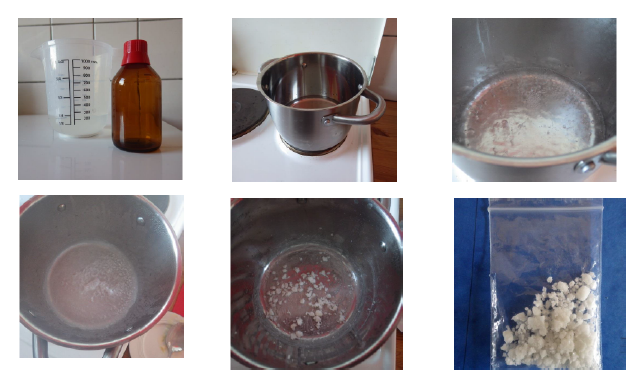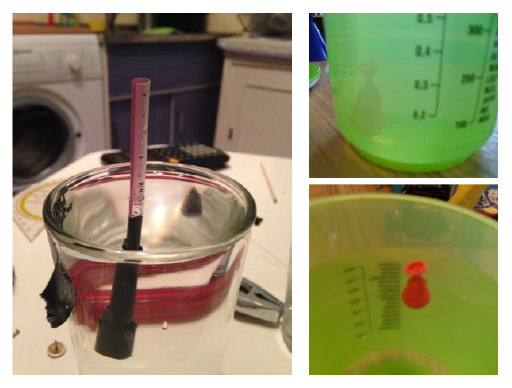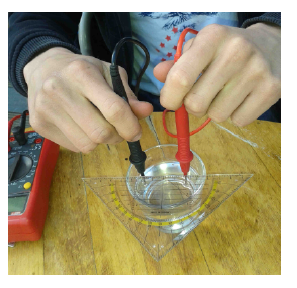Today we are looking back at a homework assignment that Joke Lübbecke gave her students 5 years ago, but that’s still interesting & relevant and also a lot of fun! The task is easy: “estimate salinity of this water sample!”. But how do you do that? Here are three different ways to solve the problem
Estimating salinity as a homework assignment
When I gave the second-year oceanography students in my class bottles of salt water and – without any further instructions – asked them to find out what the salinity was, I wasn’t really sure what to expect. Would they just take a sip and guess 35? Would they all use the same approach? So when they handed in their solutions in the following week I was very happy to see how creative they had been and how many different things they had tried to get to an answer. For example, they had
- Evaporated the water and weighted the dry salt

- Used differences in buoyancy between salt and fresh water

- Measured the electric resistance of the sample, then tried to mix a solution with the same resistance by adding more and more (defined quantities of) salt to a fresh water sample
or simply

- Tasted the sample and compared to water samples with known salinities 🙂
The numbers they came up with were as diverse as their approaches so this was also a nice demonstration of the difficulties to accurately measure salinity.
(And of course the salinity of the water sample they got was about 35, but who cares? – the journey is the reward!)
P.S.: This is a repost, first published here (29.6.2015)